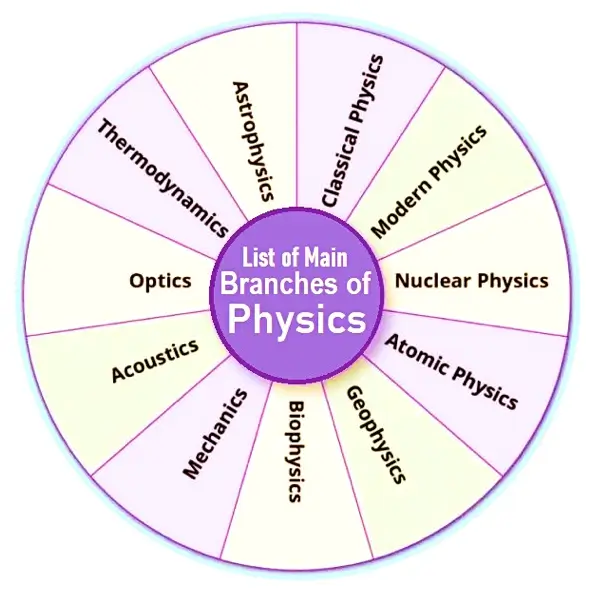Physics, the fundamental science that seeks to understand the behaviour of matter and energy at their most basic levels, encompasses a vast array of branches and applications. From the study of subatomic particles to the exploration of the cosmos, physics plays a crucial role in unraveling the mysteries of the universe and advancing technological innovation. Let’s delve into the various branches of physics and their real-world applications.
Physics, in scientific terms, can be defined as the branch of science that deals with the study of matter, energy, and their interactions in the physical universe. It seeks to understand the fundamental principles governing the behaviour of particles, fields, and forces, from the microscopic scale of subatomic particles to the macroscopic scale of celestial bodies. Physics employs mathematical models, experimental methods, and theoretical frameworks to explore phenomena such as motion, electricity, magnetism, thermodynamics, quantum mechanics, and relativity, with the aim of uncovering the underlying laws that govern the natural world.

Classical Mechanics:
- Classical mechanics, often referred to as Newtonian mechanics, forms the foundation of physics and deals with the motion of macroscopic objects under the influence of forces. It encompasses concepts such as Newton’s laws of motion, the principles of energy and momentum, and the study of systems ranging from simple projectiles to complex celestial bodies.
- Classical mechanics finds applications in engineering, architecture, and various fields of technology, including the design of bridges, airplanes, and automobiles.
Thermodynamics:
- Thermodynamics explores the relationships between heat, energy, and work. It investigates concepts such as temperature, entropy, and the laws governing the transfer of energy in different systems.
- Thermodynamics has broad applications across diverse sectors, including energy production, climate science, and refrigeration technology. From optimising the efficiency of power plants to designing sustainable energy solutions, thermodynamics plays a crucial role in shaping modern society.
Electromagnetism:
- Electromagnetism deals with the study of electric and magnetic fields and their interactions with charged particles. It encompasses Maxwell’s equations, which describe the behaviour of electromagnetic waves such as light.
- Electromagnetism finds applications in telecommunications, electronics, and particle accelerators. From the development of wireless communication technologies to the design of magnetic resonance imaging (MRI) machines in healthcare, electromagnetism underpins numerous technological advancements.
Quantum Mechanics:
- Quantum mechanics revolutionised our understanding of the microscopic world, introducing concepts such as wave-particle duality, quantised energy levels, and probabilistic behaviour of particles. It forms the basis of modern physics and has profound implications for fields such as quantum computing, nanotechnology, and quantum cryptography.
- Quantum mechanics challenges our classical intuitions and opens doors to unprecedented possibilities, including secure communication networks and ultra-fast computing systems.
Relativity:
- Albert Einstein’s theories of special and general relativity transformed our understanding of space, time, and gravity. Special relativity describes the behaviour of objects moving at high speeds, while general relativity provides a comprehensive framework for understanding gravity as the curvature of spacetime.
- Relativity has practical applications in satellite navigation systems, gravitational wave detection, and astrophysics. It enables precise measurements of time and space, contributing to advancements in GPS technology and our exploration of the cosmos.
Particle Physics:
- Particle physics delves into the study of subatomic particles and their interactions within the framework of quantum field theory. It aims to unravel the fundamental constituents of matter and the fundamental forces governing their behaviour. Particle accelerators such as the Large Hadron Collider (LHC) facilitate experiments to probe the building blocks of the universe.
- Particle physics has far-reaching implications for our understanding of the early universe, the nature of dark matter and dark energy, and the quest for new forms of energy production.
Astrophysics and Cosmology:
- Astrophysics explores the properties and dynamics of celestial objects, while cosmology investigates the origin, evolution, and fate of the universe as a whole. These branches of physics address questions ranging from the formation of stars and galaxies to the nature of black holes and the cosmic microwave background radiation.
- Astrophysical observations and theoretical models deepen our understanding of the cosmos and inform our exploration of space.
- They also inspire technological innovations, such as space telescopes and spacecraft propulsion systems, driving humanity’s quest to unravel the mysteries of the universe.
Summary:
In conclusion, physics encompasses a diverse array of branches, each contributing to our understanding of the natural world and driving technological progress. From classical mechanics to quantum phenomena, from the microscopic realm of particles to the vast expanse of the cosmos, physics continues to inspire curiosity and shape the future of humanity. By exploring the fundamental principles of the universe, physicists pave the way for groundbreaking discoveries and innovations that have the potential to transform society and enrich our lives.




